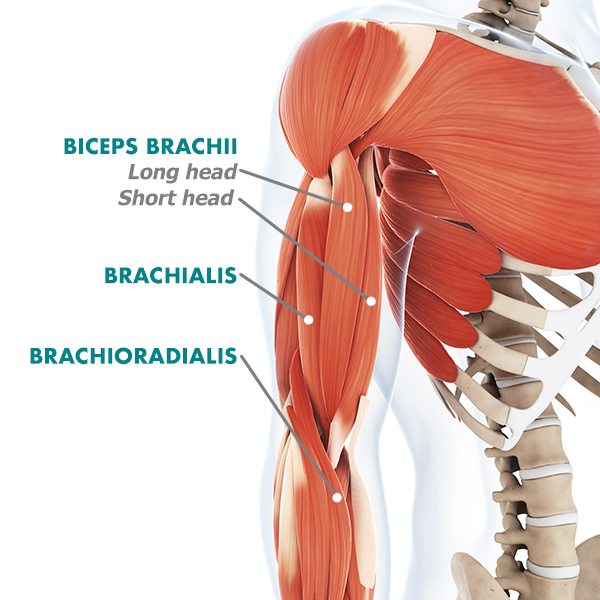In the quest for bigger, stronger arms, most consider biceps curls to be king.
So it’s annoying when you go to do dumbbell curls and find that someone else is using the weights you need.
But don’t freak out — you can still work those biceps with cable curls. Variety is a good thing! Cables even offer some benefits that dumbbells don’t.
How to Do a Cable Curl
A cable curl is essentially a standing dumbbell curl performed using the cable machine instead of dumbbells.
And the cable biceps curl is super effective.
In a 2014 American Council of Exercise study, researchers compared the cable curl, barbell curl, concentration curl, chinup, and EZ-bar curl, and found that cable curls activated 80 percent of the biceps brachii’s maximum voluntary contraction — only the concentration curl outperformed the cable curl.
That makes the cable curl more than a fallback move to do when your favorite dumbbells are in use. It’s a move that’s legitimately worth your time.
So the next time arms day comes around, put down the free weights and acquaint yourself with the cable machine and the cable biceps curl:
- Hook a straight bar attachment up to a cable machine, and set the pulley to the low position. Grab the bar with your arms extended and hands shoulder-width apart, palms facing away from you.
- Keeping your elbows tucked and your upper arms locked in place, curl the bar as close to your shoulders as you can.
- Pause, squeeze the biceps as hard as possible, and then slowly lower the bar back to the starting position.
How to Make Cable Curls Easier
You can use a lighter resistance, move the height of the cable rack up, or step closer to the machine to make the cable curl easier. Or if you need more stability doing the exercise, perform it while sitting on a bench, making sure you maintain good posture.
How to Make Cable Curls Harder
Add more resistance or step farther away from the cable machine to make cable curls harder. (The angle forces the biceps to work harder in the contracted position.)
As you get stronger, you’ll also want to play with your reps and sets — for example, once three sets of eight reps feels too easy, go for three sets of nine reps, then ten.
Once ten is too easy, you might increase the weight and go back to a lower rep count, then start increasing the reps again with the higher weight.
What Are the Benefits of Cable Curls?
“Cable curls require your body to use more stabilizers muscles and hit your biceps from all angles,” says Dimitrios Triantafyllopoulos, fitness manager of Crunch 23rd Street in New York City.
The cable machine also provides constant resistance throughout the movement — as opposed to free weights, which will be heaviest when the forearms are parallel to the floor — and requires peak contraction when you reach the top of the movement.
What Muscles Do Cable Curls Work?
Cable curls target the biceps brachii. This muscle bends your elbow and rotates your forearm, plus it’s the one that fills out your sleeve.
Standing cable curls also work your brachialis (which flexes the elbow), forearm muscles, and even your core, since you need to stabilize during the movement.
What Are Some Good Cable Curl Variations?
A cable machine isn’t just a useful alternative to biceps curls with free weights, it also allows you to use different attachments, heights, stances, and grips to change up the exercise and target the muscles from different angles.
Here are some variations to consider:
1. Rope cable curl: Hold one end of the rope in each hand with your palms facing each other. Do the standard cable curl, as explained above, but with the rope attachment.
2. High cable curl: Set the pulleys on a dual-cable machine to the highest point, and stand between the two stacks. Grab the handles so your arms are out to the sides and parallel with the floor, palms face up. Curl both arms in toward your head at the same time, keeping upper arms parallel to the floor, or alternate arms. This is also called the overhead cable curl.
3. Behind-the-back cable curl: Set a pulley to the low height. Grab the handle with one hand and face away from the machine until your arm is straight and slightly behind your body. Stagger your feet for stability and perform all of your reps with that one arm. Then switch arms to complete the set.
4. Reverse cable curl: Perform the cable curl using the bar, with an overhand grip. (Your palms face your body in the start position.) As a bonus, reverse curls are one of the best forearm exercises.
5. At-home cable curl: Chances are, you don’t have a cable machine in your apartment or home. No worries. You can use resistance bands instead, says Triantafyllopoulos. Secure one end to a high point and curl one arm at a time, or stand in the middle of the band and curl both arms at once.
The post How to Do a Cable Curl for Bigger Biceps appeared first on The Beachbody Blog.


0 Comments